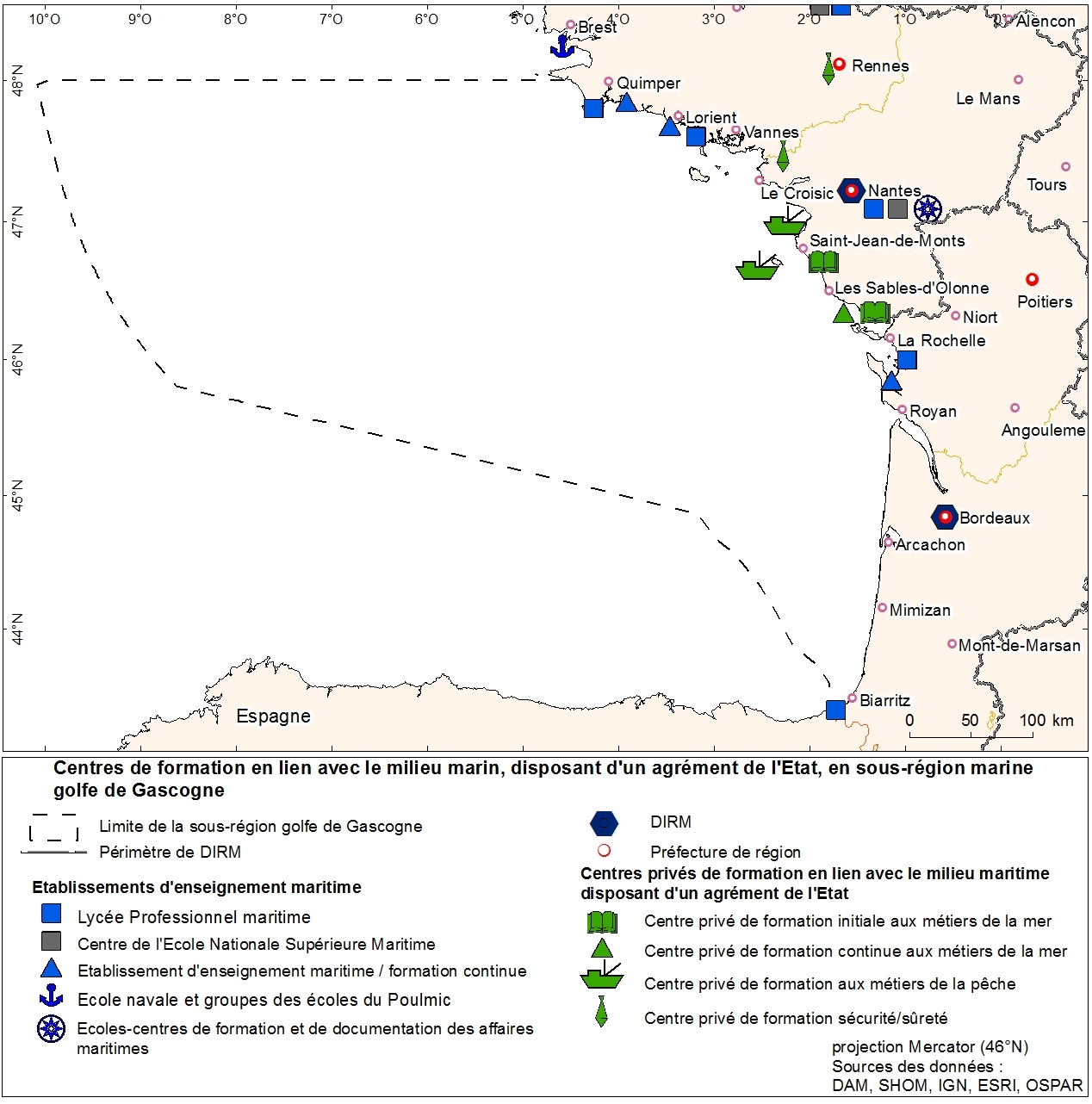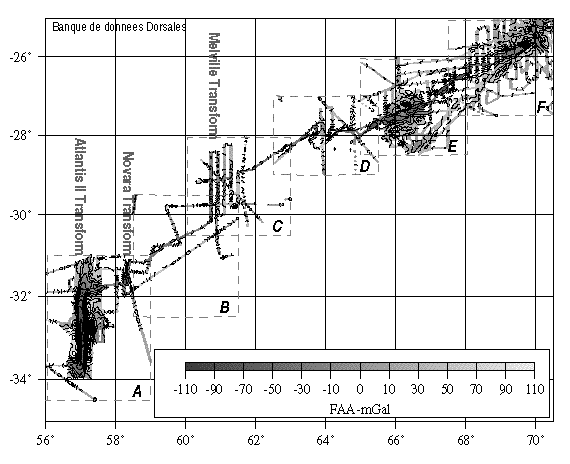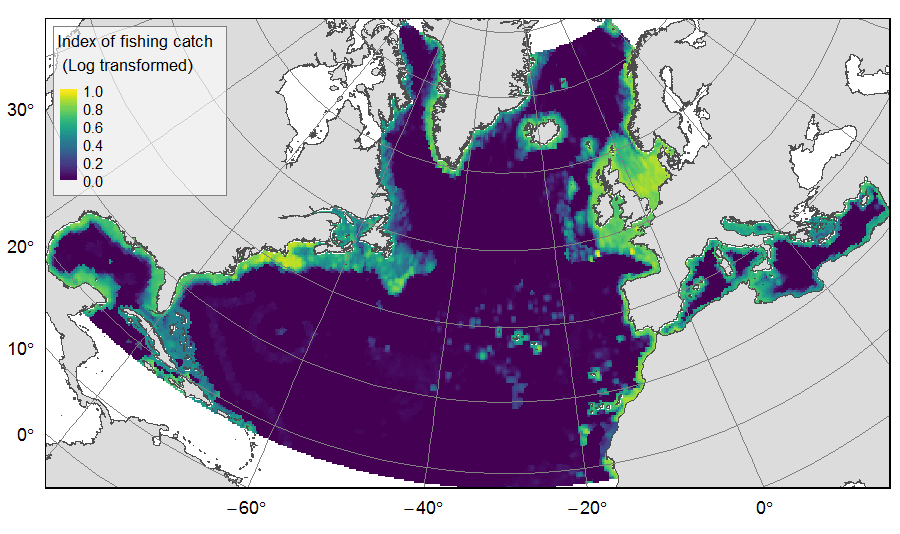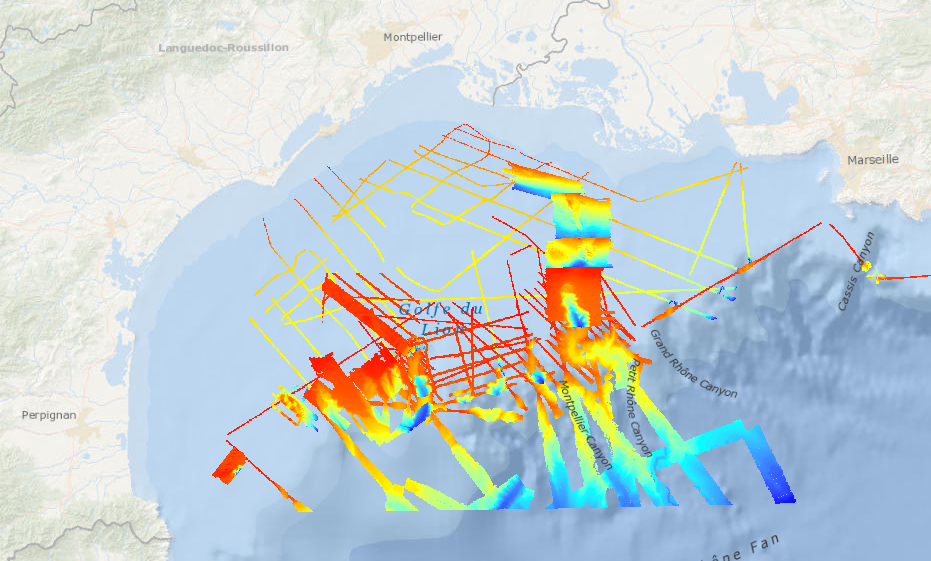Oceans
Type of resources
Available actions
INSPIRE themes
Provided by
Years
Representation types
Update frequencies
status
Scale
Resolution
-
Données de gravimétrie sur la dorsale de Mohns (Atlantique Nord), en vue d'une étude des mécanismes de l’accrétion océanique a l'axe des dorsales
-
La donnée associée met en évidence l'effort d'observation réalisé lors de la campagne d'acquisition de données d'Observation sur plateforme aérienne SAMM2 (Suivi aérien de la Mégafaune Marine) réalisée par l'Observatoire PELAGIS. L'effort d'observation est matérialisé sous la forme d'un linéaire calqué sur les transects prévus. Description de la table attributaire : region char 30 Zone d'étude platform char 10 Plateforme d'observation : ovipa/ovibat survey char 15 Nom de la campagne computer char 5 Identifiant du système sur lequel le vol est effectué sector char 10 Secteur d'échantillonnage strate char 5 Strate d'échantillonnage transectN char 10 Transect d'échantillonnage crossNb int Nombre de passage sur le transectN effortGrp char 20 Numéro du groupe d'effort leg char 70 Numéro d'effort txt leg_id int Numéro d'effort (pour un LEG uniquement) left char 5 Arrière gauche (position gauche sur une plate-forme simple) right char 5 Arrière droit (position droite sur une plate-forme simple) navigator char 5 Navigateur (position centrale) beginTime char 20 Temps auquel a été commencé le parcours endTime char 20 Temps auquel s'est terminé le parcours status char 5 Status du parcours seaState char 5 Code pour l'état de la mer selon l'échelle de Beaufort cloudCover char 5 Couverture nuaugeuse défini par le système des octats (0 pour dégagé < 8 pour complètement couvert) glareFrom char 5 Début de la zone d'éblouissement en degré (le nez de l'avion 0°) glareTo char 5 Fin de la zone d'éblouissement en degré (le nez de l'avion 0°) glareSeverity char 5 ntensité d'éblouissement (0 aucun éblouissement < 3 éblouissement fort) turbidity char 5 Turbidité/transparence de l'eau (0 eau claire < 2 eau turbide, 9 turbidité inconnue) subjective char 20 Détectabilité. Estimation des observateurs en fonction des autres paramètres si les conditions sont bonnes ou non. Il s'agit de deux lettres, une pour le côté gauche et une pour le côté droit. (E excellentes, G bonnes, M moyennes et P pauvres). comment char 400 Commentaires sur le parcours lat double Latitude géographique en degré décimal du début du parcours lon double Longitude géographique en degré décimal du début du parcours latEnd double Latitude géographique en degré décimal de la fin du parcours lonEnd double Longitude géographique en degré décimal de la fin du parcours lengthKm double Longueur de l'effort en km engin char 30 Immatriculation de l'avion utilisé pour le vol speed int Vitesse (km/h) lors de la capture altitude char 15 Altitude (feet) lors de la capture coordN char 15 Code EPSG du système de coordonnées dans lequel les valeurs de distance ont été calculées
-
La cartographie des habitats de pockmarks (émissions de fluides froids) au large du Congo a été réalisée par le laboratoire Environnement Profond de l'Ifremer dans le cadre de la campagne WACS. La méthode employée pour cette cartographie des habitats repose sur le dépouillement préalable des vidéos acquises grâce au ROV Victor 6000 dans le cadre de la campagne océanographique WACS (du 26/01/2011 au 25/02/2011, chef de mission : Karine OLU). Les habitats ont été décrits au plus fin niveau d'analyse puis ont été classifiés selon la typologie EUNIS (https://www.eea.europa.eu/data-and-maps/data/eunis-habitat-classification-1). Données publiées dans: Marcon, Y., H. Sahling, A.-G. Allais, G. Bohrmann and K. Olu (2014a). Distribution and temporal variation of mega-fauna at the Regab pockmark (Northern Congo Fan), based on a comparison of videomosaics and geographic information systems analyses." Marine Ecology 35(1): 77-95. doi: 10.1111/maec.12056
-

Les organismes de formation aux métiers de la mer géolocalisés à la commune. Cette donnée a été produite dans le cadre de l'évaluation initiale de la DCSMM. Référent expert : Sophie Devergie. AVERTISSEMENT : la structuration spatiale de la donnée doit être améliorée car elle comporte des superpositions de points (plusieurs organismes de formation par commune). Ici l'outil "Representation" d'ArcGis a été mis en œuvre pour faciliter la représentation cartographique de cette donnée qui ne répond pas aux normes de base de la topologie. A terme, la qualité de la donnée pourra être améliorée en affinant la géolocalisation à l'adresse.
-

Compilation de données gravimétriques entre 1973 et 1994
-

Distribution of catch from deep-sea impacting fishing on the North Atlantic (18°N to 76°N and 36°E to 98°W), for the period 2010-2015. The average of yearly fishing catch for the period 2010-2015 is displayed as an index on the ATLAS grid of 25km * 25km resolution. Source data originated from the Global Fisheries Landings V4.0 database. The dataset was filtered to select only the fishing gears that have an impact on large areas of the seafloor (dredges, bottom trawls, and Danish seines). Within each cell, all remaining catch records were summed to get the total catch rate of the considered year. This dataset was built to feed a basin-wide spatial conservation planning exercise, targeting the deep sea of the North Atlantic. The goal of this approach was to identify conservation priority areas for Vulnerable Marine Ecosystems (VMEs) and deep fish species, based on the distribution of species and habitats, human activities and current spatial management.
-
Localisation des organisations professionnelles liées à la conchyliculture dans le cadre du projet EUROSHELL
-

Ce lot de données bathymétriques est mis à disposition dans le cadre de l'étude de dérisquage à réaliser dans le Golfe du Lion pour l'attribution d'un Appel d'Offre "éolien flottant commercial" d'ici 2022. Il regroupe des modèles numériques de bathymétrie couvrant uniquement les eaux territoriales françaises, et dont les données ont été acquises pendant les campagnes océanographiques : AM-MED-1, BASAR2, BASAR3, RHOSOS et STRATAFORM 1.
-
Les sites de production conchylicoles peuvent prendre plusieurs réalités. Parfois, leur identification est réglementaire et sert à la classification sanitaire des zones de productions. Dans le projet Euroshell, le choix a été fait de cartographier les zones de production dont l’identification a du sens à la fois pour les scientifiques et pour les professionnels. Il s’agit alors d’un nombre restreint de zones, souvent correspondant à une réalité hydrographique. En effet, la conchyliculture est majoritairement installée dans des estuaires, embouchures, baies, fjords, rias ou lagunes. Cette carte présente les sites de production conchylicole français, qui regroupent chacun plusieurs zones. Quelques informations sont données concernant les espèces produites, le nombre d'entreprises et/ou concessions et/ou producteurs, la quantité de production approximative.
-
Données de magnétisme sur la dorsale de Mohns (Atlantique Nord), en vue d'une étude des mécanismes de l’accrétion océanique a l'axe des dorsales.
 Mon GéoSource
Mon GéoSource